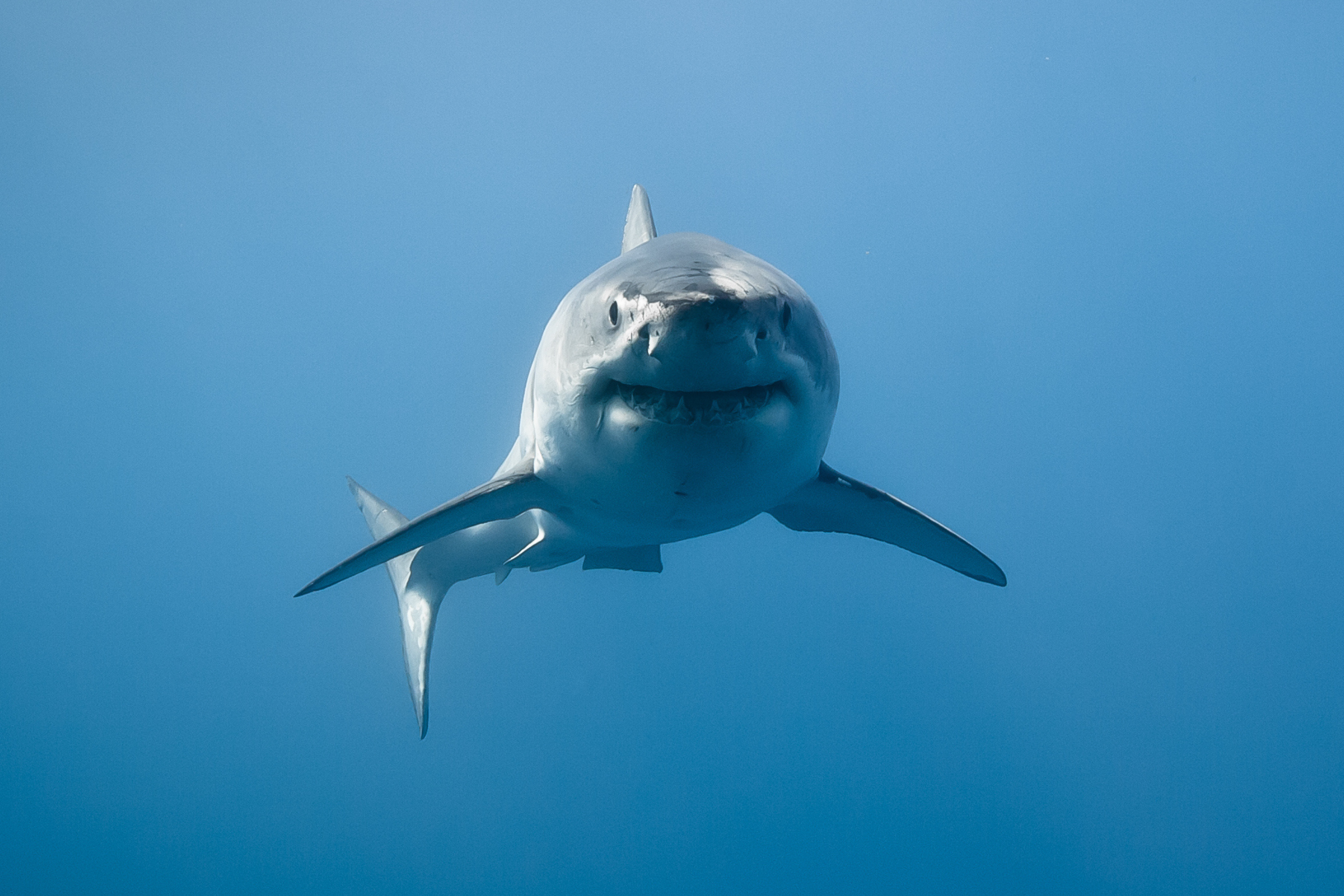In an intriguing case of nature’s drama, researchers have pinpointed the likely suspects behind the mysterious disappearance of a pregnant porbeagle shark being tracked near Bermuda. The potential culprits? A great white shark or, perhaps less likely, a shortfin mako. This could mark the first documented instance of large sharks preying on one another.
Brooke Anderson, the lead author of a study published in Frontiers in Marine Science, expressed her astonishment at the finding. “This is the first recorded predation event of a porbeagle shark globally,” she stated.
She further noted the ecological impact, highlighting that the loss of both the maternal shark and her developing pups could significantly affect a population already threatened by overfishing.

vladoskan/Getty
Porbeagle sharks, which inhabit the Atlantic, South Pacific, and Mediterranean seas, can reach lengths of up to 12 feet and weigh around 500 pounds. With a lifespan of up to 65 years, they reproduce slowly, typically giving birth to a few pups every one to two years after reaching approximately 13 years of age.
This slow reproductive cycle places porbeagles at risk from overfishing and habitat loss. The International Union for Conservation of Nature (IUCN) classifies them as endangered in the Northwest Atlantic and critically endangered in the Northeast Atlantic and Mediterranean.
The porbeagle tracked in this study was tagged during a 2020 research expedition off Cape Cod. The team used two satellite tags to monitor her movements and environmental conditions. Initially, she demonstrated typical behavior, moving through various depths while the temperature recorded by the tags fluctuated between 44°F and 74°F.
However, on March 24, 2021, a change in temperature data suggested something troubling. The tag transmitted a consistent temperature of 72°F at depths between 500 and 2,000 feet for four days—implying she had likely been consumed by a larger predator.

James Sulikowski
The researchers narrowed down the two possible predators to the great white shark and the shortfin mako, both known to inhabit the region. The evidence leaned toward the great white, as its movement patterns aligned better with the recorded data than those of the shortfin mako.
“The predation of one of our pregnant porbeagles was an unexpected finding,” Anderson remarked. “While we typically regard large sharks as top predators, emerging technologies reveal their interactions could be more nuanced than we realized.”
She emphasized the importance of continued research into these predator interactions to better understand their ecological implications.
References
Anderson, B. N., Horstmyer, L., Ballard, K. L., Dodd, J., & Sulikowski, J. A. (2024). First evidence of predation on an adult porbeagle equipped with a pop-off satellite archival tag in the Northwest Atlantic. Frontiers in Marine Science. https://doi.org/10.3389/fmars.2024.1406973
